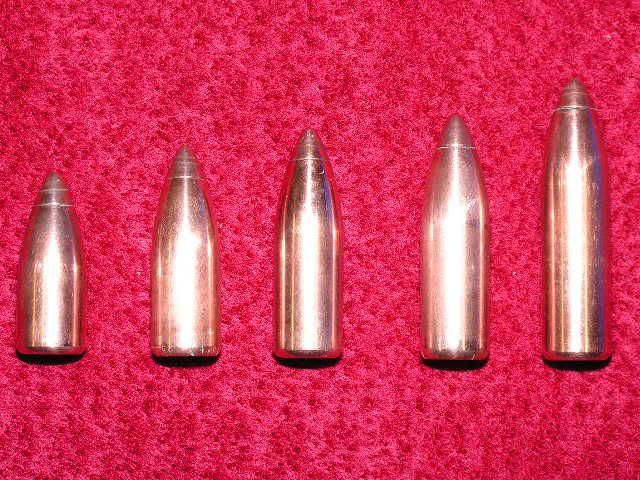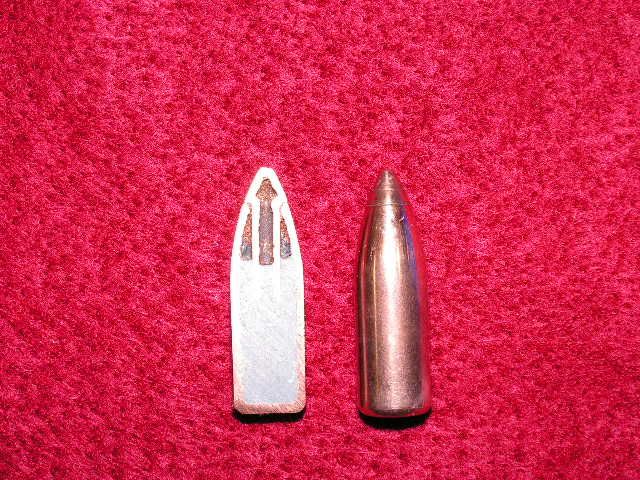Why do people always want to talk to me when I'm away hunting?


I don't recall the post you're referring to, but at one time I considered making flat tipped bullets using inverted .22 rimfire cases as tips, but so far I haven't pursued that idea.
What I do is make hollow tips from inverted bullet jackets. I start with .22 calibre jackets, reduce them to .20, then through a two stage process, form a .20 tip with a .17 shank that I insert into the bullet during the point forming process. I use a small secondary core to hold the tip in place and help in retarding expansion. I find the combination of features causes an initial shock and a degree of expansion that usually puts the animal right down, then the tip remnant and secondary core retard the expansion to guarantee penetration. When the tip remnant is eventually torn away (probably in microseconds) natural expansion continues.
Tests in wet phone books have indicated to me that bonded core versions of this bullet aren't significantly better than regular cored versions - though further testing is probably advisable on this. I still carry bonded bullets in my Whelen for moose hunts and standard cores in my .358 for deer.
I have yet to recover a bullet from a deer (haven't managed to connect on a moose with them yet), and in all but two cases I've had bang/flop results. In the other cases the running deer were dead on their feet and went only a few yards.
I have yet to come up with an acceptable flat tip design to use in my .356.
I'll now try to post a couple of pictures of my bullets.

The next is a cross section that has undergone some minor adjustments since the picture was taken. I also believe I can adjust expansion characteristics by varying the relative heights of the lead in the main bullet and the tip (the lower the level of the lead in the tip, the greater the expansion).
